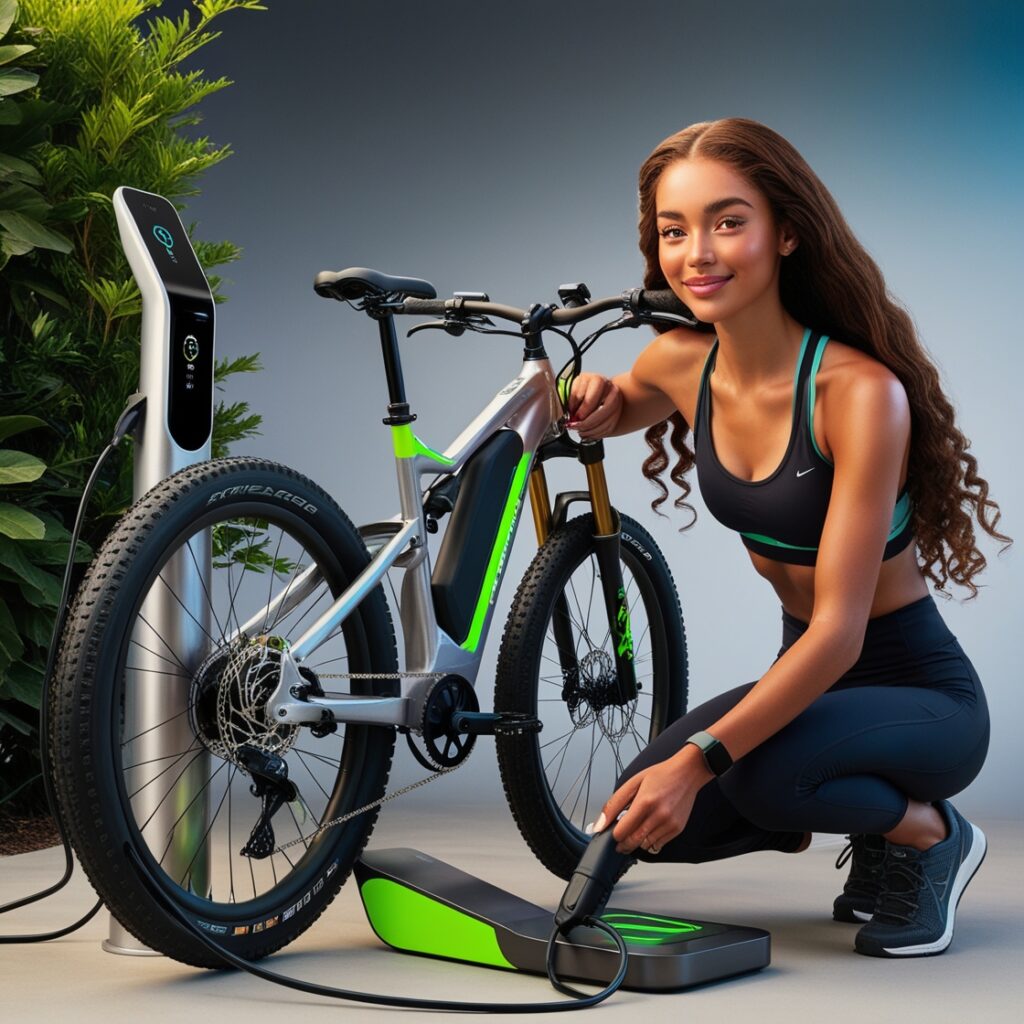Revolutionize your ride! Discover the ultimate electric bike battery charger for faster, safer, and more efficient charging.

Electric Bike Chargers: Keeping Your Ride Ready
What You Need to Know About Electric Bike Battery Chargers
Alright, let’s talk about the unsung hero of your electric bike—the battery charger. This little gadget is what keeps your e-bike ready for action, whether you’re commuting to work or hitting the trails. An electric bike battery charger is designed to juice up your e-bike’s battery, so you never have to worry about running out of power mid-ride. They come in different voltage and current ratings to match various e-bike batteries.
E-bike chargers usually have voltage ratings like 36V, 48V, and 52V. The current ratings, measured in amperes (like 2A, 3A), should match your e-bike’s battery specs for the best performance (SANS). Here’s a quick cheat sheet:
| Voltage Rating | Current Rating | Charging Time (approx.) |
|---|---|---|
| 36V | 2A | 6-8 hours |
| 48V | 3A | 4-6 hours |
| 52V | 3A | 5-7 hours |
Knowing these ratings helps you pick a charger that fits your e-bike’s battery and your lifestyle.
Why Compatible Chargers Matter
Using the right charger is key to keeping your e-bike battery in top shape. A mismatched charger can lead to slow charging, a shorter battery life, and even safety risks. Good e-bike chargers come with safety features like thermal protection, short-circuit protection, and overcharge protection to keep both your battery and charger safe (SANS).
If you’re always on the move, an efficient charger can cut down the time it takes to recharge your battery. Less waiting, more riding—that’s the dream, right? By making sure your charger is compatible with your battery, you can charge up quickly and get back to enjoying your ride.
And hey, while you’re at it, why not check out other must-have electric bike accessories like an electric bike helmet or an electric bike lock? These extras can make your rides safer and more convenient, adding to the fun of your e-bike adventures.
Types of Electric Bike Battery Chargers
Picking the right charger for your electric bike is like finding the perfect pair of shoes—get it wrong, and you’ll regret it. Let’s break down the different types of chargers you can get, focusing on voltage, current ratings, and the various ports and connectors.
Voltage and Current Ratings
When you’re shopping for an e-bike charger, you gotta know your volts and amps. These numbers need to match your bike’s battery specs to keep things running smoothly. Common voltage ratings are 36V, 48V, and 52V. As for current ratings, you’ll see options like 2A, 3A, and higher.
| Voltage Rating | Current Rating | Use Case |
|---|---|---|
| 36V | 4A or 6A | Standard e-bikes |
| 48V | 3A or 4.8A | High-performance e-bikes |
| 52V | 2A or 3A | Specialized e-bikes |
For instance, FIT offers chargers with 36V (4A or 6A) and 48V (3A or 4.8A). It’s crucial to pick the right voltage to avoid frying your battery (Fit E-Bike). Matching these specs keeps your battery healthy and prevents damage. You might also check out advanced chargers from Xtorm, which offer various power stations for different e-bike needs.
Port and Connector Varieties
The type of port and connector on your charger is another big deal. Different e-bike models need different connectors. Here are some common ones:
- DC Barrel Plugs: These are the go-to for many e-bike models.
- XLR Connectors: Known for being tough and reliable.
- Anderson Powerpole Connectors: Great for high-current needs.
| Connector Type | Description | Compatibility |
|---|---|---|
| DC Barrel Plug | Common and versatile | Most e-bikes |
| XLR Connector | Durable and secure | High-end e-bikes |
| Anderson Powerpole | High current capacity | Specialized e-bikes |
Choosing the right connector ensures your bike charges efficiently and safely. For more info on e-bike accessories, check out our section on electric bike accessories.
Understanding these key aspects of e-bike chargers will help you make a smart choice and keep your ride in top shape. For more tips on e-bike maintenance and safety, explore our articles on electric bike conversion kits and electric bike locks.
Features of Electric Bike Chargers
When I’m picking out an electric bike charger, I want it to be efficient and safe. Here are some must-have features:
LED Indicators and Charging Status
LED indicators are a lifesaver. They tell me exactly what’s going on with my battery. Here’s what they usually show:
- Charging in Progress: Red or blinking light.
- Full Charge: Green light.
- Error Alert: Flashing red or another color.
These lights help me avoid overcharging or unplugging too soon. It’s a small detail, but it keeps my battery in top shape. For more on electric bike gear, check out our electric bike accessories guide.
Safety Features for Battery Protection
Safety first, always. Modern chargers come with several features to protect both the battery and the bike. Here are some key ones:
- Thermal Protection: Stops the battery from overheating.
- Short-Circuit Protection: Prevents electrical shorts.
- Overcharge Protection: Stops charging when the battery is full.
High-end chargers, like those from Xtorm, add even more layers of safety. They have auto-power management, cooling systems, and overload protection. For more details on costs and warranties, visit our battery replacement costs section.
| Safety Features | Description |
|---|---|
| Thermal Protection | Prevents overheating |
| Short-Circuit Protection | Guards against electrical shorts |
| Overcharge Protection | Stops charging when full |
| Auto-Power Management | Manages power distribution |
| Cooling System | Keeps the charger cool |
| Overload Protection | Prevents excessive current |
Some chargers even talk to the battery to make sure each cell is charged just right. Liv’s Smart Charger, for example, adjusts the voltage based on the weather to keep the battery efficient.
When I’m choosing a charger, I make sure it matches my bike’s specs and has these safety features. This way, I can charge my bike confidently and keep it in great condition.
For more tips on electric bike safety, don’t forget to explore our articles on electric bike helmets and electric bike locks.
Charging Tips for E-Bike Batteries
Choosing the right charger for your e-bike battery can make a world of difference in how quickly and efficiently it charges. Let’s break down what you need to know to get the most out of your e-bike battery.
How Charger Current Affects Charging Time
The charger’s current rating, measured in amperes (A), is a big deal when it comes to charging speed. Higher current chargers juice up your battery faster but can generate more heat, which might wear out your battery quicker. Lower current chargers are slower but kinder to your battery.
Here’s a quick look at how different current ratings affect charging time:
| Charger Current (A) | Approximate Charging Time (hours) |
|---|---|
| 2A | 6-8 |
| 3A | 4-6 |
| 4A | 2-4 |
Make sure your charger’s current rating matches your e-bike battery’s specs. You can usually find this info in your e-bike’s user manual or on the battery itself. For more must-have electric bike accessories, check out our dedicated section.
What Affects Charging Efficiency?
Several things can impact how efficiently your e-bike battery charger works. These include the charger’s voltage rating, its quality, and the technology it uses.
- Voltage Rating: E-bike chargers come in different voltage ratings like 36V, 48V, and 52V. Matching the charger’s voltage rating with your e-bike battery ensures efficient and safe charging (SANS).
- Charger Quality: High-quality chargers are designed to minimize energy loss and heat generation, making charging more efficient. Companies like Infineon have introduced solutions based on hybrid flyback converters that achieve high efficiency without needing heat sinks or fans (Power Systems Design).
- Charging Technology: Advanced technologies like Infineon’s CoolGaN™ GaN transistors offer increased power density, higher switching frequencies, and better thermal management. These features lead to more efficient power conversion for e-bike chargers (Power Systems Design).
By keeping these factors in mind, you can ensure your e-bike battery charger is not only compatible but also efficient and safe. For more in-depth info, check out our articles on electric bike conversion kits and tips for maintaining your e-bike.
Picking the Right Electric Bike Charger
Choosing the right charger for your electric bike is like picking the right shoes for a marathon. Get it wrong, and you’ll be hobbling along in no time. So, let’s break it down into two main things: matching the charger specs and getting the voltage right.
Matching Charger Specs
When I’m on the hunt for an electric bike charger, the first thing I do is make sure the charger specs match my e-bike battery. Chargers come with different voltage and current ratings, and these numbers are key. For instance, you might see voltage ratings like 36V, 48V, and 52V, and current ratings in amperes such as 2A, 3A, and 4A.
Matching these specs ensures your battery charges efficiently and safely. Check out this table to see how different chargers affect charging times:
| Battery Capacity (Wh) | Charger Current (A) | Charging Time (Hours) |
|---|---|---|
| 500 | 4 | 3.4 |
| 630 | 4.8 | 3.9 |
| 750 | 4.8 | 4.3 |
As you can see, a higher current rating means faster charging. But don’t go overboard—too much current can fry your battery cells and electronics.
Getting the Voltage Right
Voltage is another biggie. Using a charger with the wrong voltage can damage your battery and even cause it to catch fire. So, always stick to the voltage rating your battery needs. Here are some common voltage ratings:
| Voltage Rating (V) | Suitable for Battery Type |
|---|---|
| 36 | Standard e-bike batteries |
| 48 | High-capacity e-bike batteries |
| 52 | Specialized e-bike batteries |
Double-check these numbers before you buy to keep your battery in good shape and avoid any nasty surprises.
By paying attention to these details, you can keep your e-bike running smoothly. For more tips and gear, check out our articles on electric bike accessories, electric bike locks, and electric bike helmets.
Turbocharge Your E-Bike Charging
Fast and Efficient Charging Tech
Charging your e-bike battery faster and safer is now easier thanks to some cool tech. These innovations make sure your e-bike’s battery juices up quickly without any hiccups.
One standout is the PFC-flyback converter. Originally for LED lights, it’s now a game-changer for e-bike chargers. Take Infineon’s 116 W charger, for example. It hits over 90% efficiency at 230 VAC, RMS input. Perfect for those 48 V battery packs you see all over Asia.
Then there’s the hybrid flyback converter, also called the asymmetrical half-bridge flyback converter. This one tackles the problem of energy loss as chargers get more powerful. Infineon’s version hits a peak efficiency of 95% at full load and doesn’t even need heat sinks or fans (Power Systems Design).
The Magic of Semiconductors
Semiconductors are the unsung heroes in e-bike chargers. Infineon has a whole lineup of these, including battery management systems (BMS), controller ICs, and switches like CoolGaN™ and CoolMOS™.
CoolGaN™ Tech
Infineon’s CoolGaN™ transistors take power conversion to the next level. They offer more power density, higher switching frequencies, better thermal management, and overall efficiency. These GaN transistors allow zero-voltage switching (ZVS) with less magnetization current, lower conduction losses, and a smaller transformer size, making everything run smoother and more efficiently (Power Systems Design).
| Tech | Efficiency | Features |
|---|---|---|
| PFC-flyback Converter | >90% | Cost-effective, efficient, great for 48 V battery packs |
| Hybrid Flyback Converter | 95% | Super efficient, no heat sinks or fans needed |
| CoolGaN™ Transistors | Enhanced | More power density, higher switching frequencies, better thermal management |
By using these advanced semiconductors and efficient charging tech, you can totally upgrade your e-bike charging game. Want more cool stuff? Check out our articles on electric bike helmets and electric bike locks.
Keep Your E-Bike Battery Safe and Sound
Taking care of your electric bike battery is key to keeping your ride smooth and long-lasting. Here’s a down-to-earth guide on battery types, safety tips, and why smart chargers are your battery’s best friend.
Battery Types and Safety Tips
Not all e-bike batteries are created equal. Different batteries come with their own safety features. Take Liv’s E-bike batteries, for example. Co-developed with Panasonic, these batteries are built to last and keep you safe. They’re put together by top-notch manufacturers and go through rigorous testing to make sure they won’t let you down (Liv Cycling).
Liv’s EnergyPak batteries have a nifty design with individual separators inside. This means if one cell gets hot, it won’t spread the heat to its neighbors, cutting down the risk of overheating or fires. Plus, the Battery Management System (BMS) keeps an eye on each cell, making sure everything runs smoothly (Liv Cycling).
| Battery Type | Safety Features |
|---|---|
| Liv’s EnergyPak | Individual separators to stop heat spread, BMS for cell monitoring |
| Generic E-Bike Batteries | Basic heat protection, standard BMS |
Smart Chargers: The Battery Whisperers
A smart charger can be a game-changer for your e-bike battery. Liv’s Smart Charger, for instance, keeps a constant chat going with the battery, making sure each cell gets the right amount of juice. This not only keeps your battery healthy but also extends its life (Liv Cycling).
When the weather gets wild, the Smart Charger adjusts the charging voltage to keep your battery in tip-top shape. This is super handy if you’re riding in different climates.
So, if you want to get the most out of your e-bike battery, a smart charger is the way to go. It ensures efficient charging and shields your battery from harm. For more cool electric bike accessories, check out our other picks.
| Charger Type | Key Features |
|---|---|
| Liv’s Smart Charger | Talks to the battery, adjusts voltage in crazy weather |
| Standard Charger | Basic charging, no smart features |
For more handy tips on keeping your e-bike battery in great shape and other electric bike accessories, explore our site. And if you’re thinking about upgrading your ride, an electric bike conversion kit might just be what you need to make your commute even better.
Cost Considerations and Warranty
Buying an electric bike? Let’s talk about the costs and why registering your warranty is a must.
Battery Replacement Costs
The battery is the heart of your e-bike, and it can be pricey. According to Ride1Up, a good battery can set you back $500 to $900, making up about 40% of the bike’s total cost.
Several things affect the price: capacity, type, build quality, voltage, amps, and watt hours. A lighter battery with a longer range can give you more bang for your buck.
Here’s a quick look at what you might pay for different models:
| Battery Model | Price Range |
|---|---|
| Ride1Up Core-5 | $240 – $389 |
| Ride1Up LMT’D | $489 |
| Specialized Turbo Vado | $700 – $900 |
| Bosch PowerPack 500 | $800 – $900 |
For top-notch replacement batteries, Ride1Up offers options from $240 to $489, all with glowing reviews.
Registering Products for Warranty
Registering your e-bike battery and charger is a no-brainer. It validates your warranty and keeps you in the loop about recalls.
Here’s how to do it:
- Find the Serial Number: Look for the serial number on your battery or charger.
- Visit the Manufacturer’s Website: Go to the product registration section.
- Fill Out the Form: Enter your product details, including the serial number, purchase date, and place of purchase.
- Submit and Save Confirmation: Submit the form and keep the confirmation for your records.
For example, if you bought a battery from Ride1Up, register it on their website to ensure warranty coverage and stay updated on recalls. More info on e-bike safety and recalls is available on the government Product Recalls and Alerts website.
Investing in a good charger can also extend your battery’s life. Check out our other articles on electric bike accessories and electric bike locks for more tips on keeping your e-bike in top shape.



